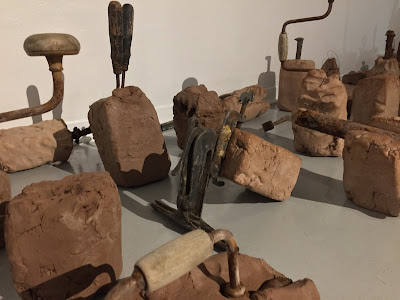I will be teaching a number of classes at the Nova Scotia Centre for Craft and Design as part of their Winter 2017 program.
 |
| Irresistible Dye Techniques Image of dyed fabric by Sarah |
Simply Irresistible Dye Techniques
Mondays, January 23 – February 27
6:30-9:30 (18 hours/6 weeks)
$185 + materials fee $50 payable to the instructor on first day of class
Class Size: 6 (no experience necessary)
Registration Closes January 16
Simply Irresistible covers a variety of resist dye techniques including the Japanese art of shibori (stitching, wrapping, and knotting), and ombré gradient methods using indigo. We will create silk wool and cotton samples using natural dyes and experiment with alternative dye methods such as rust. Thermo-treated techniques to create three dimensional works through the use of heat are demonstrated.
 |
| Prints Charming Screen Printing Image of screen print by Willa |
Prints Charming
Saturdays, February 11 – March 4
1:00-4:00 (12 hours/4 weeks)
$125 + materials fee $50 payable to the instructor on first day of class
Class Size: 6 (no experience necessary)
Registration Closes February 6
Design and print your own fabrics! In this course we will use screenprinting, block printing and various resist methods. This course will encourage artistic exploration of ideas using basic colour theory to mix your own colours and experiment with transparent and opaque print pastes. The skills developed in this course can be applied in the studio or on the kitchen table.
 |
| Design and Print your own tea towel image of block print by Natasha |
Design and Print Your Own Tea Towel
Saturday & Sunday, January 28 & 29
1:00-4:00 (6 hours/2 days)
$60 + materials fee $50 payable to the instructor on first day of class
Class Size: 6 (no experience necessary)
Registration Closes January 23
NEW! In this two-day course students will explore shapes, colours, and layering using simple stencils to create their own personalized tea towels.
 |
| Furoshiki wrapping cloth Image of design by Kate |
Furoshiki (Japanese wrapping cloth)
Saturday & Sunday, April 1 & 2
1:00-4:00 (6 hours/2 days)
$60 + materials fee $50 payable to the instructor on first day of class
Class Size: 6 (no experience necessary)
Registration Closes March 27
Students can make their own reusable and recyclable Japanese wrapping cloths, both beautiful and functional used for a lunch bag, ecowrapping technique, or clothing garment. Students will experiment with different resist dying techniques using indigo dye on silk and cotton fabric.
 |
| Zen Stitching Image of design by Ingeborg |
Zen Stitching: Embroidery as Textile Art
Sundays, February 26 and March 5
1:00-4:00 (6 hours/2 days)
$60 + materials fee $30 payable to the instructor on first day of class
Class Size: 6 (no experience necessary)
Registration Closes February 19
NEW! Embroidery can be a traditional, sustainable, a simple repetitive act, allowing time for reflection and bringing a meaningful and thoughtful approach to textile practice. In this two-day course students will explore ways in which to slow down by using simple techniques, reusing and re-inventing materials and limiting equipment. Take the time to think about the practical and decorative techniques of mending.
To enrol in any of these courses, call Alexis, the Studio Coordinator, at 902-492-2524
Or register in person! Come see us at 1061 (Mary E Black Gallery) or 1096 (The Studios) Marginal Rd.















































